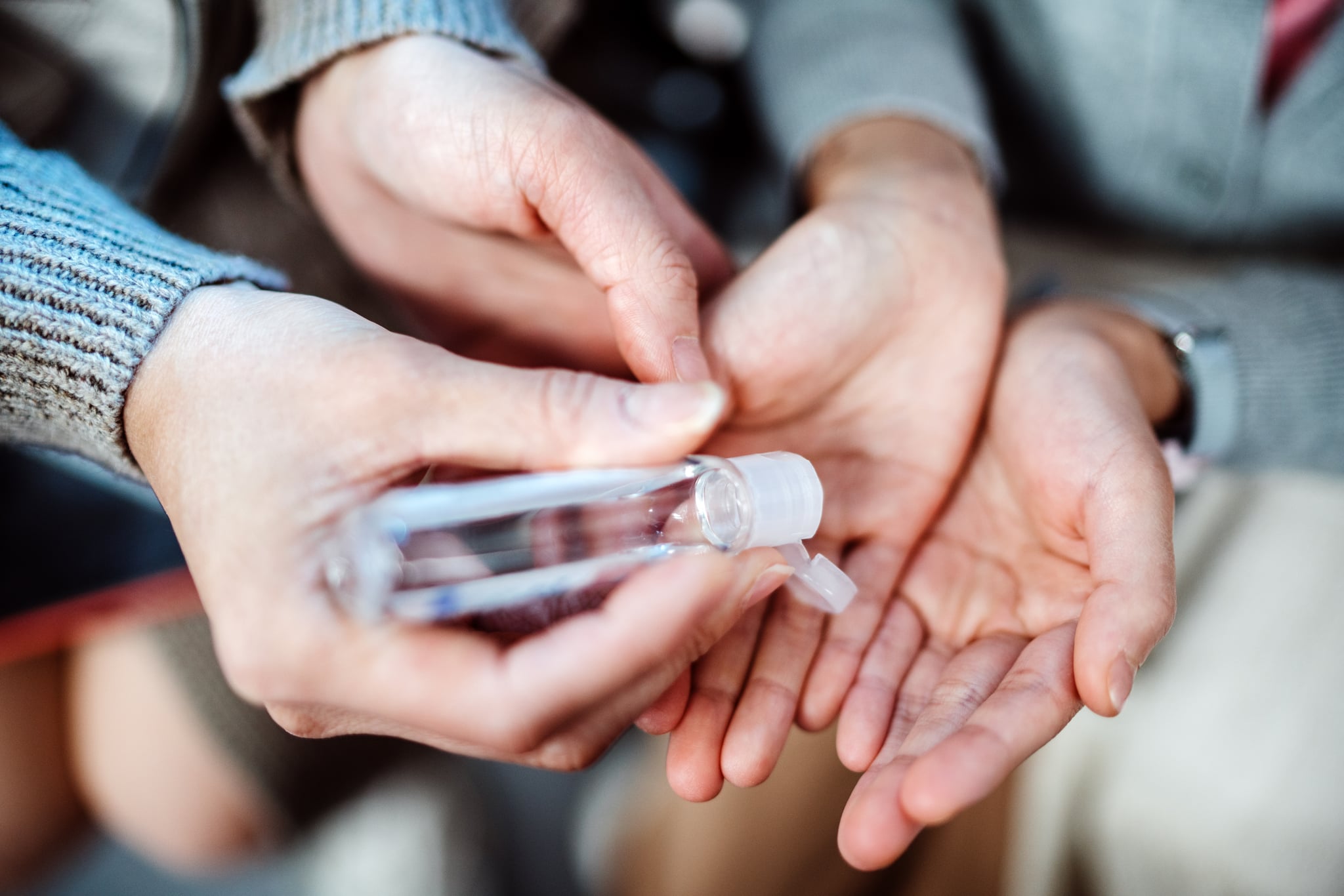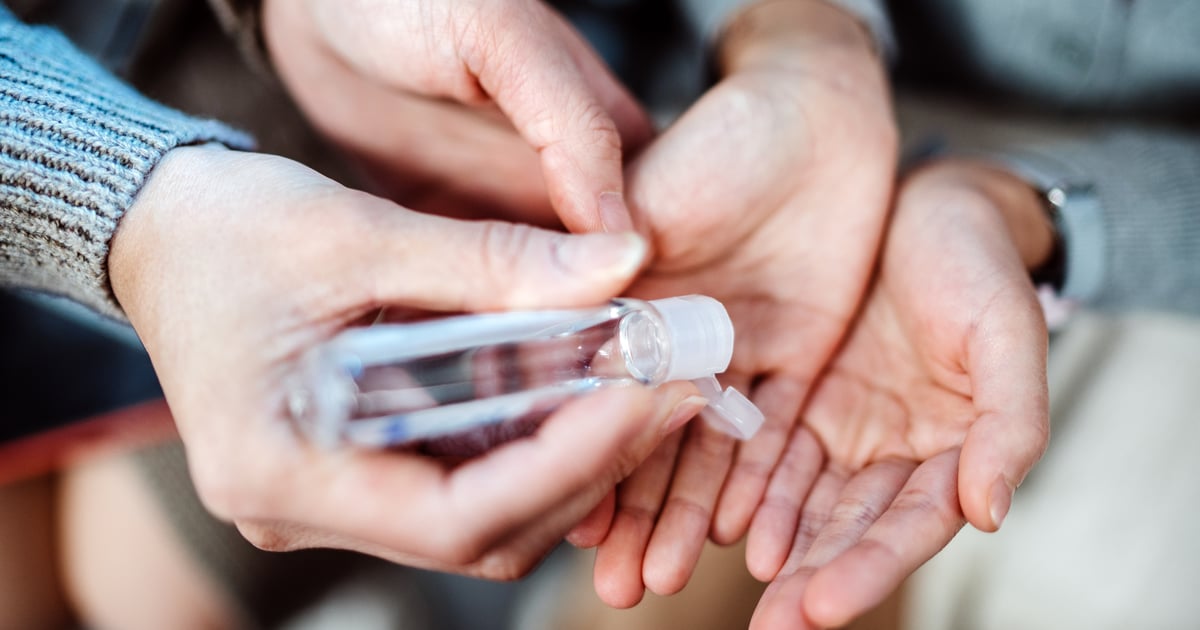Products You May Like

Last month, the World Health Organization declared monkeypox a global public health emergency. Since then, the outbreak of the virus has pushed states like California, Illinois, and New York to declare states of emergency. CNBC reports that these three states — home to the nation’s largest cities — represent 47 percent of all confirmed monkeypox infections in the country. As of Aug. 3, the US holds the highest number of confirmed monkeypox cases worldwide at 6,326, according to the Centers for Disease Control and Prevention (CDC).
The existence of a new epidemic — while we’re still fighting the COVID pandemic — is daunting and leaves many of us wondering how to stay safe.
According to the CDC, monkeypox is spread primarily through close, direct physical contact with monkeypox rash, scabs, or body fluids. It can also be spread through indirect contact, like touching fabrics and objects that were used by a person with monkeypox, or via exposure to respiratory secretions from a person with monkeypox. It’s also possible for a pregnant person to transmit the virus to their fetus through the placenta.
While the majority of people affected in the current outbreak are men who have sex with men, “anyone can get and spread monkeypox,” says infectious-disease expert Julie Myers, MD, MPH, deputy chief medical officer at MetroPlusHealth. Scientists have not yet collected enough data to confirm if monkeypox can be spread through semen, vaginal fluids, urine, or feces, per the CDC.
Unlike the COVID pandemic, we do not have to wait for a vaccine to be developed. The Food and Drug Administration approved use of the Jynneos vaccine to fight monkeypox, and almost 800,000 additional doses have been made available in the US. Basic protection protocols have also been made available from the CDC. With #MonkeyPoxIsAirborne trending on Twitter and cases rising daily, you’ll want to be informed about best practices and precautions. Be mindful of the safety tips ahead.
Wash Your Hands Often
Like any virus, it’s crucial to wash your hands with soap and water frequently. “Rub your hands together to create a good lather, and scrub under your nails, between your fingers, and the backs of your hands. You should wash for at least 20 seconds — humming the ‘Happy Birthday’ song from start to end twice usually does it,” Sandra Kesh, MD, deputy medical director and infectious-disease specialist at Westmed Medical Group in Purchase, NY, previously told POPSUGAR. If you’re on the go, use an alcohol-based hand sanitizer — especially before eating or touching your face and after you use the bathroom.
Avoid Contact With People Who Have Monkeypox
The CDC recommends avoiding skin-to-skin contact with people who have a rash “that looks like monkeypox.” Monkeypox rashes can be located on or near the genitals or anus, as well as other areas like the hands, feet, chest, face, or mouth. The rash can look like pimples or blisters and usually scabs before healing.
If someone in your household tests positive for monkeypox, you should maintain your distance from them. “People with monkeypox should isolate themselves until the rash has fully resolved, the scabs have fallen off, and a fresh layer of intact skin has formed,” Dr. Myers says. This process typically takes two to four weeks, but the timing of isolation will vary from person to person. They also should avoid touching the rash, or it can spread to other parts of the body and may delay healing.
The CDC recommends covering all parts of the rash with clothing, gloves, or bandages and wearing a mask to prevent oral and respiratory secretions from spreading. Those isolating should not share items with other people or animals, per the CDC. Make sure that items and surfaces that have come in contact with a lesion are washed, including bed linens, clothing, towels, wash cloths, drinking glasses, eating utensils, counters, and light switches.
Get Vaccinated If You Are Eligible and at Risk
The CDC recommends you get vaccinated if you have been exposed to monkeypox or are considered more likely to get monkeypox. The CDC categories for those more likely to get monkeypox include: people who are confirmed by public-health officials to have had contact with someone who has monkeypox, people who have sexual partners that have been diagnosed with monkeypox in the past two weeks, and people who have had sexual partners within the last two weeks in an area with known monkeypox. The CDC also consider people whose jobs expose them to orthopoxviruses more likely to get monkeypox.
There are two vaccination options available to those who are eligible. The Jynneos vaccine is the one you’ve probably heard about the most. “It is a two-dose vaccine; individuals should get the second dose at least four weeks after the first dose,” Dr. Myers says. “They will start to build protection in the days and weeks after the first dose, achieving full immunity two weeks after the second dose.” The other vaccine, ACAM2000, is a single-dose vaccine that’s also available, but it can lead to adverse reactions for people with certain conditions (e.g. eczema, HIV, and more). You should talk to your healthcare provider about which option is best for you.
Follow Safety Precautions With Sexual Partners
Communication is key for any relationship, but especially during a monkeypox outbreak. Keep your romantic or sexual partner(s) up to date on any recent illness or unexplained rashes. If either of you have recently felt sick or have a new rash, the CDC says do not have sex and see your healthcare provider.
If monkeypox is confirmed, the best way to protect yourself and others is to avoid sexual intimacy including kissing, touching, and oral, anal, and vaginal sexual interactions. Avoid sharing items like towels or sex toys. If you think you might have the virus and decide to proceed with sex, consider having virtual sex (no in-person contact), masturbating together at distance (at least six feet), and reducing as much skin-to-skin contact as possible and covering areas where rash is present.
While condoms are used to protect against disease, the CDC says condoms alone are likely not enough to prevent monkeypox — especially if the rash is not confined to the genitals or anus.
Isolate If You’ve Been Exposed and Start Experiencing Symptoms
If you have had contact with animals or people with monkeypox, you should monitor symptoms for 21 days after your last exposure, according to the CDC. If symptoms develop (fever, chills, swollen lymph nodes, or a new rash), you should immediately self-isolate and contact the health department for further guidance. Dr. Myers suggests checking your temperature twice daily. “If you are experiencing monkeypox-like symptoms, you can contact your doctor via telehealth to discuss the symptoms, testing, and vaccination options available,” Dr. Myers suggests. “A virtual exam can determine if an in-person visit is necessary.”
It may take three to four days to get ab test results. To keep others from catching monkeypox, you should self-isolate during that time from other family members and pets at home, says Dr. Myers. Routinely clean and disinfect items such as bed linens, clothing, towels, wash cloths, drinking glasses, or eating utensils.
